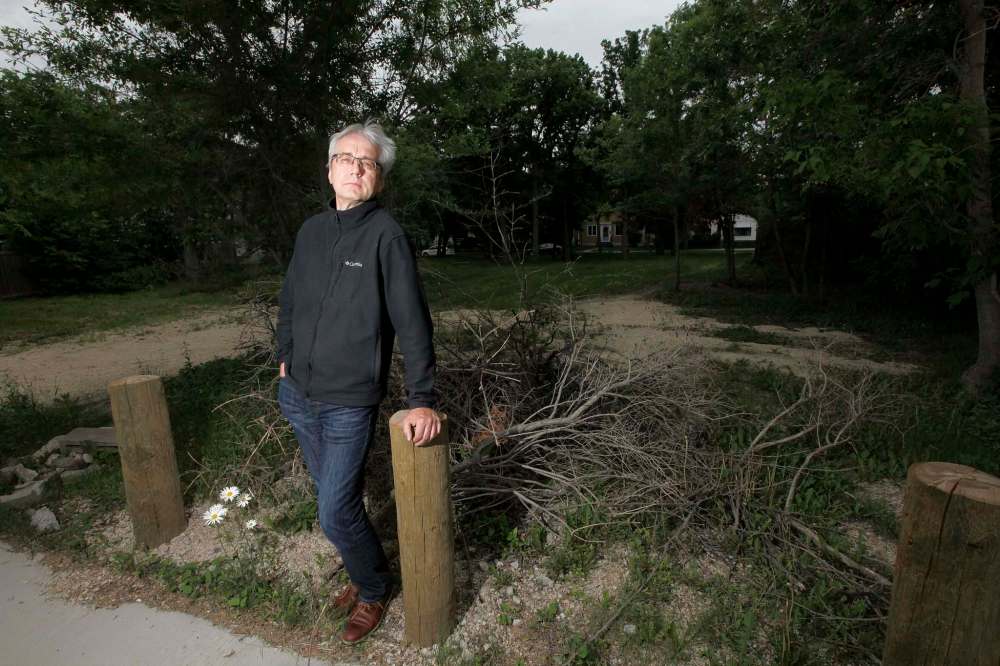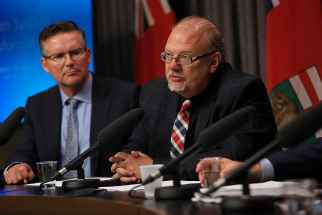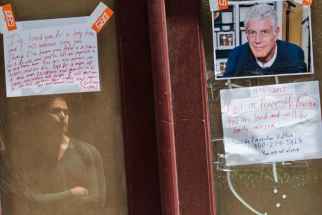City takes next step in proposed expansion of Kenaston
Read this article for free:
or
Already have an account? Log in here »
To continue reading, please subscribe:
Monthly Digital Subscription
$0 for the first 4 weeks*
- Enjoy unlimited reading on winnipegfreepress.com
- Read the E-Edition, our digital replica newspaper
- Access News Break, our award-winning app
- Play interactive puzzles
*No charge for 4 weeks then price increases to the regular rate of $19.00 plus GST every four weeks. Offer available to new and qualified returning subscribers only. Cancel any time.
Monthly Digital Subscription
$4.75/week*
- Enjoy unlimited reading on winnipegfreepress.com
- Read the E-Edition, our digital replica newspaper
- Access News Break, our award-winning app
- Play interactive puzzles
*Billed as $19 plus GST every four weeks. Cancel any time.
To continue reading, please subscribe:
Add Free Press access to your Brandon Sun subscription for only an additional
$1 for the first 4 weeks*
*Your next subscription payment will increase by $1.00 and you will be charged $16.99 plus GST for four weeks. After four weeks, your payment will increase to $23.99 plus GST every four weeks.
Read unlimited articles for free today:
or
Already have an account? Log in here »
Hey there, time traveller!
This article was published 14/06/2018 (2735 days ago), so information in it may no longer be current.
Development of the Kenaston Boulevard–St. James bridges project has moved into a phase that includes a new preliminary design — but area residents remain concerned about what they don’t know about the undertaking.
Winnipeg city hall and its consultants are meeting residents directly affected by the proposed, high-priority roads project — one with an uncertain future, as there is yet no funding — in a series of six by-invitation-only meetings. The first was Tuesday; a second meeting was planned for Thursday night.
Price tag
Escalating cost estimate of the Route 90/St. James bridges project:
2011 – $129 million, cited in the Transportation Master Plan, a Class 4 estimate (in 2009 dollars)
2015 – $375 million, cited in a March 24, 2015, council seminar to determine roadway infrastructure projects priority ranking, a Class 5 estimate
2018 – $450 million, amount posted on the city’s Unfunded Major Capital Projects website, a Class 5 estimate

“The city is guilty of many sins of omissions on this project,” Ken Klassen, whose home the city will have to acquire and demolish if the project goes ahead, told the Free Press.
Klassen claimed city hall has played down the escalating cost of the project and excluded the residents most affected from membership on an advisory committee.
The city plans to widen Kenaston Boulevard to six lanes from four, and widen the St. James bridges spanning the Assiniboine River. The project will require the acquisition — through purchase or expropriation — of 136 properties: 94 single-family homes and 21 duplex units, 81 of which are owned by the Department of National Defence.
“I have no doubt the city will offer fair value for the houses if and when they need them, but right now, the issue is what do the owners do in the meantime?” Klassen said. “The city has basically left those homes unsellable, with the city the only buyer.
"Older people who are thinking of selling can’t now, and no one is going to invest in their properties if they have to sell them down the road.”
Klassen, a consultant in the sustainable building sector, said the public and local politicians should be concerned about several aspects of the project, including the estimated cost starting out at $129 million in 2011, climbing to $375 million in 2015, and now it sitting at $450 million.
Vaibhav Banthia, the City of Winnipeg’s project manager, said residents were fully briefed on the project at the first meeting, adding their unease is expected.
“Generally, people were appreciative of the (information), however, when you affect people’s homes there is going to be some type of anxiety and a bit of anger as well,” Banthia said Thursday.
He said the decision to exclude area residents from the advisory committee was deliberate, adding the members were chosen to represent the broader Winnipeg community. “We don’t want people with very, very specific or personal interests on the project” to be on the committee.
Banthia said the consult will prepare a final design and a more accurate cost estimate by the end of February 2019.
A report with recommendations is expected to go to city council in the spring of 2019.
Banthia said acquiring private property for the Kenaston Boulevard project is expected to take 18 to 24 months and construction, if approved, is expected to last three to four years.
Ward Coun. John Orlikow said he’s pleased with how the project has been progressing to date, adding however he recognizes property owners whose homes might be expropriated will have concerns.
“Feedback from the residents overall has been very positive,” Orlikow (River Heights-Fort Garry) said, adding the proposed corridor changes are expected to greatly reduce or eliminate much of the cut-through traffic from motorists trying to avoid congestion.
“We’re trying to minimize the impact for those people and trying to figure out the buffering for the people who live behind those (impacted) homes with berms, trees and different landscaping ideas."

Residents concerned a widened Kenaston will be a freeway have been dealt with, Orlikow said, adding the speed limit will only be increased to 60 km/h (from 50 km/h) once the project is completed.
However, Orlikow said city hall can’t afford to proceed with the project on its own, adding it will need financial help from either the provincial or federal governments — or both.
Aaron Dolyniuk, business operations manager with the Manitoba Trucking Association and a member of the advisory committee, said the trucking industry is looking forward to the project being completed, adding the corridor is a key link between industrial areas in the city’s north and south ends.
!function(e,t,n,s){var i=”InfogramEmbeds”,o=e.getElementsByTagName(t)[0],d=/^http:/.test(e.location)?”http:”:”https:”;if(/^/{2}/.test(s)&&(s=d+s),window[i]&&window[i].initialized)window[i].process&&window[i].process();else if(!e.getElementById(n)){var a=e.createElement(t);a.async=1,a.id=n,a.src=s,o.parentNode.insertBefore(a,o)}}(document,”script”,”infogram-async”,”https://e.infogram.com/js/dist/embed-loader-min.js”);
“I don’t think there is ever a such a thing as a perfect solution that incorporates all users perfectly, but I think everybody has the same goals — usability, flow of traffic, and safety,” Dolyniuk said. “The way they’re approaching it is they’re trying to solve problems that currently exist. At least try to make things better than they are now.”
Anders Swanson, executive director of the Winnipeg Trails Association, said he’s struggling to understand why city hall is preparing to spend a half-billion dollars for a project he thinks will only be a temporary solution to the area’s traffic congestion.
Key upcoming dates
June 20 – Public open house, Outlet Collection Winnipeg, 555 Sterling Lyon Parkway, 6-8 p.m.
June 25 and 27 – Community meeting (by invitation only), Carpathia School, 300 Carpathia Rd., 6 p.m.
June 28 – Public open house, Outlet Collection Winnipeg, 555 Sterling Lyon Parkway, 2-4 p.m.
Aug. 31 – WSP Canada required to produce a draft preliminary design.
Nov. 1 – Tentative date for a public open house to review preliminary design.
Feb. 28, 2019 – Deadline for WSP Canada to submit final preliminary design.
Spring 2019 – Report with recommendations to Winnipeg city council.
Area resident Larry D’Argis said neighbours also wonder if the city shouldn’t be considering a different solution.
D’Argis (who writes a classic car column for the Free Press) said congestion is definitely a problem, but the project as designed will not improve the neighbourhood.
“Look, I’m a car guy through-and-through, but $450 million is a huge amount of money just to improve a road,” said the chairman of a local residents group. “It will likely cost a lot more when the design is finished, and that kind of money could be better spend elsewhere in the city.”
aldo.santin@freepress.mb.ca
Knowing the options
The redesign of Kenaston Boulevard/Route 90 will be based on one of five options presented to the public in 2009 and 2010.
Known as “Option 4,” the project will result in widening the west side of Kenaston between Taylor Avenue and Tuxedo Boulevard, and then widening the east side of Kenaston between Tuxedo Boulevard and the St. James bridges.
According to the request for proposal document issued a year ago, the City of Winnipeg will have to acquire 136 properties along Kenaston: 94 single homes and 21 duplex units — 81 of which are owned by the Department of National Defence.
The widening of Kenaston Boulevard will provide for 1.8-metre-wide sidewalks on both sides, plus a three-metre-wide cycling and pedestrian pathway on the west side from Taylor Avenue to Wellington Crescent.
The RFP states the widening of Kenaston will require the closing of several side streets north of Willow Avenue, and construction of a pedestrian bridge at Lockston Avenue.
For the west side, the city will have to acquire a strip of land from Taylor to Tuxedo avenues, consisting of the former Kapyong Barracks property and the military housing north of the barracks land.
Transitioning to the east side would occur between Lockston and Tuxedo avenues, with the acquisition of private homes and properties north to Academy Road.
For the bridge project, the northbound and southbound sides will be widened to four lanes, but current plans differ from what had been considered a year ago.
The northbound span will be retained, rehabilitated and widened.
For the southbound span, the city originally required the roadway to be realigned and straightened. However, WSP Canada, the consultant awarded the design contract, suggested another option: converting the existing southbound bridge as an access route to Academy Road with a pedestrian/cycling lane, and constructing a third span for southbound traffic between the existing two bridges.
The city is considering an option that would use the adjacent decommissioned railway bridge, which is privately owned, for an expanded pedestrian and cycling network.
The RFP says the southbound span of the bridge was constructed in 1936, and most recently rehabilitated in 2016. The span is expected to reach its useable service life by 2021-23.
The northbound span was constructed in 1962, and rehabilitated in 1987.
The RFP is requiring the WSP Canada team to include at least one “industry-recognized bicycle facilities design expert, with extensive knowledge and experience in the design of complex bicycle facilities in North America.”
WSP Canada is required to produce a draft preliminary design by Aug. 31. The tentative date for a public open house to review the preliminary designs is set for Nov. 1. The consultant will be expected to submit a final preliminary design by Feb. 28, 2019.
aldo.santin@freepress.mb.ca
History
Updated on Thursday, June 14, 2018 9:19 PM CDT: Fixes typo








